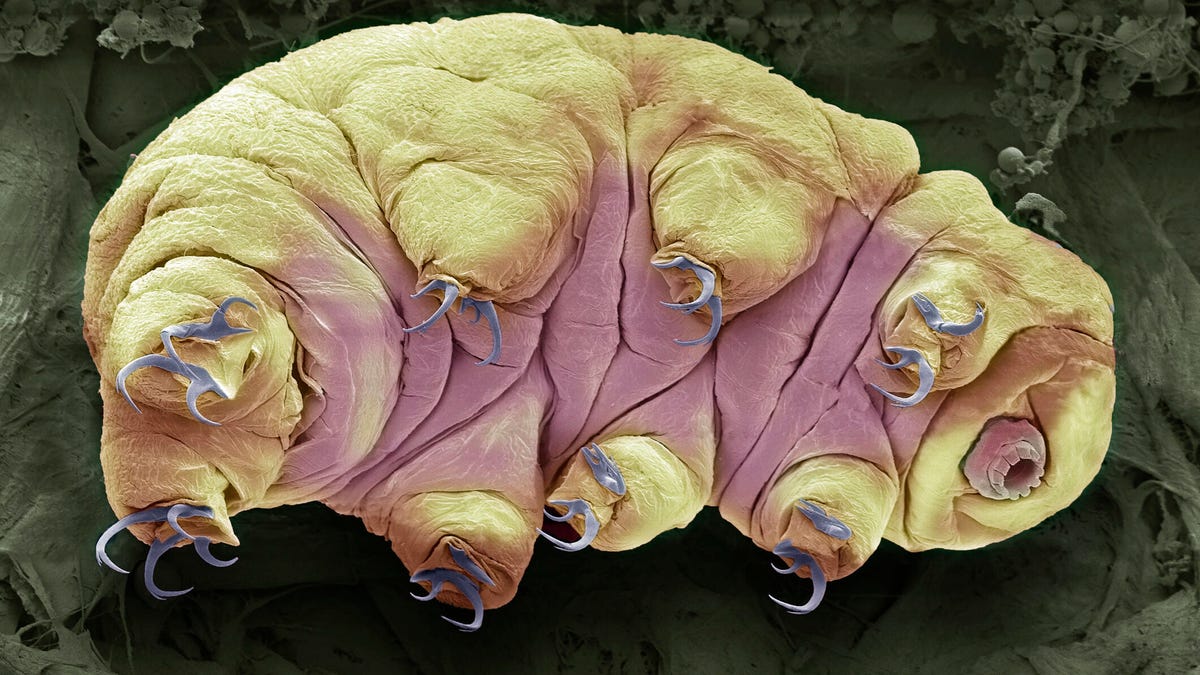The unkillable water bear uses 'fluorescent shield' to withstand deadly radiation
UV radiation is no match for a new species of tardigrade discovered in India.

Tardi-great! A new species of tardigrade has been discovered that may use fluorescence as a UV shield.
Tardigrades are practically unkillable. The microscopic creatures, commonly known as "water bears," can tolerate stress that would end most other organisms. The vacuum of space? No problem for the moss piglets. Extreme pressure and temperatures? Child's play. Radiation? Pfft. Tardigrades can deal with that, too. They may have even survived a crash landing on the moon.
A new species, discovered by scientists in a moss sample grown on a concrete wall in Bengaluru, India, has its own protective superpowers: It can survive ultraviolet (UV) radiation by using a "fluorescent shield."
In a study published Tuesday in the journal Biology Letters, a team of Indian researchers examined the new species, dubbed Paramicrobiotus BLR. Knowing how resilient the creatures are, the team put them to the test. First, they found that the strain survived germicidal levels of UV radiation -- enough to kill another less-hardy species of tardigrade commonly used in experiments, known as H. exemplaris, within 24 hours.
UV radiation can damage DNA, tearing it apart and causing cells to wither and die. But Paramicrobiotus survived the exposure for 30 days.
The researchers write that the next finding was "incidental." While studying the creatures under UV light, they noticed test tubes full of Paramicrobiotus BLR were glowing or "fluorescing" while the H. exemplaris tubes weren't. They reasoned the fluorescence might be shielding the creatures from the dangerous effects of UV radiation.
To test if the fluorescence was related to UV shielding they "homogenized" 300 Paramicrobiotus. Which is a nice, sciencey way of saying they blended 300 creatures together in a tissue grinder with some water. The resulting solution contained the chemicals seemingly used by Paramicrobiotus as a UV shield.
The scientists added this solution to a plate containing microscopic worms and the H. exemplaris tardigrades, to determine if it would provide a protective effect. It did. The worms and the tardigrades showed higher survival rates after exposure to UV radiation that would usually kill them.
The fluorescent chemical compound Paramicrobiotus BLR is using as a shield has yet to be determined. Perhaps other proteins protect against UV radiation -- and they'd also be present in the homogenized solution that had a protective effect.
Other well-known microorganisms employ a wide range of tactics to deal with radiation. Bacteria, like Deinococcus radiodurans, have developed their own methods. A recent experiment on the International Space Station demonstrated the microorganism can repair UV-induced DNA damage quickly and that pellets of bacteria could survive exposure to UV radiation for three years. And fungi found near the Chernobyl nuclear power plant can feed on radiation, turning it into chemical energy.
The research team believes the tardigrade may have evolved its fluorescent shield to counter the high levels of UV radiation seen in tropical southern India. While other tardigrades have shown resistance to UV radiation, the mechanism for this protection has remained elusive. Discovering which compounds are responsible for the protective effect could see the development of new sunscreens or materials that shield against the harmful effects of UV. Perhaps we could even coat our space suits in a tardigrade sludge.

